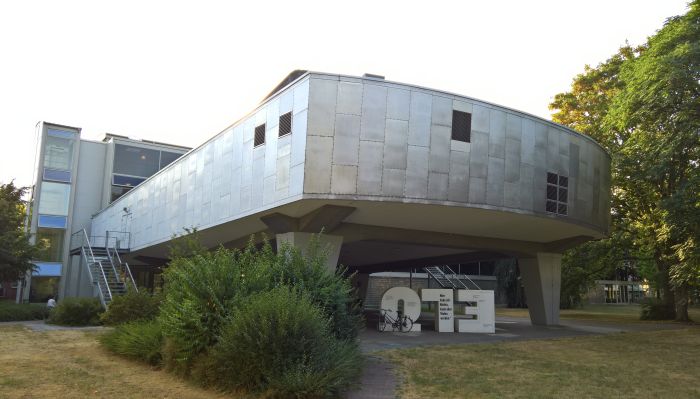#campustour 2018: designkrefeld Werkschau, Hochschule Niederrhein, Krefeld, Germany
As we all learned from the exhibition Peter Behrens. The Practical and the Ideal at the Kaiser Wilhelm Museum Krefeld, the city was an important location in the development of the young Peter Behrens, not least through the role played by the museum’s founding director Friedrich Deneken in helping Behrens take his first steps from pure to applied arts; help which included not only giving Behrens’ work space in the museum but also mediating commissions with Krefeld manufacturers.
One of the more interesting projects discussed by Deneken and Behrens was creating the Damenzimmer – Boudoir – in Behrens’ house on the Mathildenhöhe Artists Colony in Darmstadt as a “Krefeld Room”, featuring exclusively, or near as makes no difference, works by Krefeld manufacturers.
Ultimately, for reasons of time, it wasn’t realised as such, but the fact that it was seriously considered underscores the depth of manufacturing and craft industries in Krefeld of 1901.
And the breadth of Behrens’ fledgling talents.
Krefeld of 2018 may not have the depth of industry it enjoyed in 1901, but do the current fledgling designers have the breadth of talent of a Peter Behrens?
The 2018 designkrefeld Werkschau provided a good opportunity to gather an impression.
